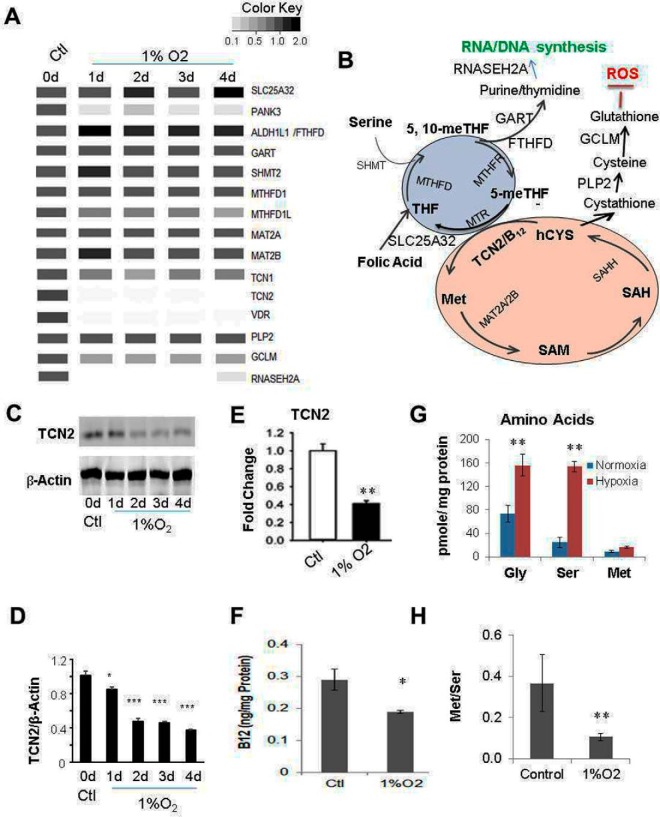Fig. 7.
Hypoxia impedes one-carbon metabolism by the vitamin B12-tranporter TCN2. A/B, MS pseudo-WB and locations of the proteins in the pathway. The most significant hypoxia-induced downregulated proteins were TCN2 (Transcobalamin II), RNASEH2A (Ribonuclease H2), PANK3 (pantothenate kinase 3, needed for CoA biosynthesis), VDR (vitamin D receptor), and GCLM (glutamate-cysteine ligase); less significantly downregulated proteins were TCN1 (Transcobalamin I), MTHFD1L (methylenetetrahydrofolate dehydrogenase 1-Like); no or slight change: SHMT2 (Ser hydroxymethyltransferase 2 (mitochondrial)), MTHFD (methylenetetrahydrofolate dehydrogenase 1), SCL25A32 (solute carrier family 25 (mitochondrial folate carrier), member 32), MAT2A/2B (Met adenosyltransferase 2A/2B), MTHFR (methylene tetrahydrofolate reductase), FTHFD (formyltetrahydrofolate dehydrogenase), GART (phosphoribosylglycinamide formyltransferase) and PLP2 (papain-like proteinase 2). C, Fluorescence image of WB of TCN2. D, Statistical analyses of three repeats of WB in C. E, mRNA of TCN2 in control and 4d under hypoxia by RT-qPCR. F, Vitamin B12 concentration in control (d0) and at 4d under hypoxia, by ELISA. G, Ser, Gly, and Met amino acid concentrations in control and at 4d under hypoxia, by GC/MS. H, Met/Ser calculated from G.

